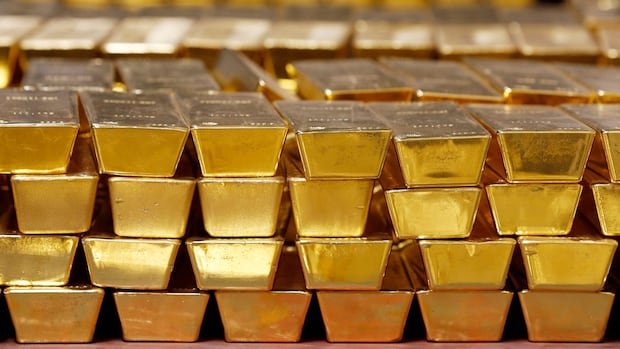Gold futures have surged above $4,000 US per troy ounce for the first time, driven by investors seeking a secure haven amid the ongoing U.S. government shutdown. The commodity reached a historic high on Tuesday morning after closing at $3,960.60 per troy ounce on Monday.
The demand for gold tends to increase during times of economic uncertainty, with anxious investors turning to stable investments for their funds. Even prior to the shutdown, gold and other metals like silver had experienced significant gains due to the uncertainties created by President Donald Trump’s tariffs and their impact on the global economy.
Factors such as the anticipation of lower interest rates have also boosted gold’s appeal compared to interest-bearing investments. Gold futures have surged by approximately 50% since the beginning of the year, currently trading at around $4,013 per troy ounce. Silver futures have seen an even more substantial increase of about 60%, reaching close to $48 per troy ounce.
The economic disruptions stemming from Trump’s trade policies have led to a surge in gold prices, as businesses and consumers grapple with increased costs and a weakened job market. Gold is often viewed as a hedge against inflation, particularly during times of economic uncertainty when consumer confidence wanes.
The ongoing U.S. government shutdown has exacerbated these economic concerns, with delays in key economic data and federal employees facing furloughs and working without pay. President Trump’s threats to use the shutdown to enact mass firings and potentially close offices have further escalated anxieties among investors.
Giovanni Staunovo, a commodity analyst at UBS Global Wealth Management, attributes the rise in gold investments to the continued weakness of the U.S. dollar and the Federal Reserve’s recent rate cuts. Additionally, strong gold demand from central banks worldwide and geopolitical tensions have also contributed to the surge in gold prices.
Staunovo highlighted that the gold rally commenced in 2022, with the freezing of Russian foreign holdings by the U.S. and Western allies during the Ukraine conflict serving as a pivotal moment. While gold is perceived as a safe haven asset, investors need to be mindful of its volatility, which can range from 10-15%. Smaller quantities of physical gold, such as coins or one-gram bars, also exhibit significant price variations between buying and selling.


